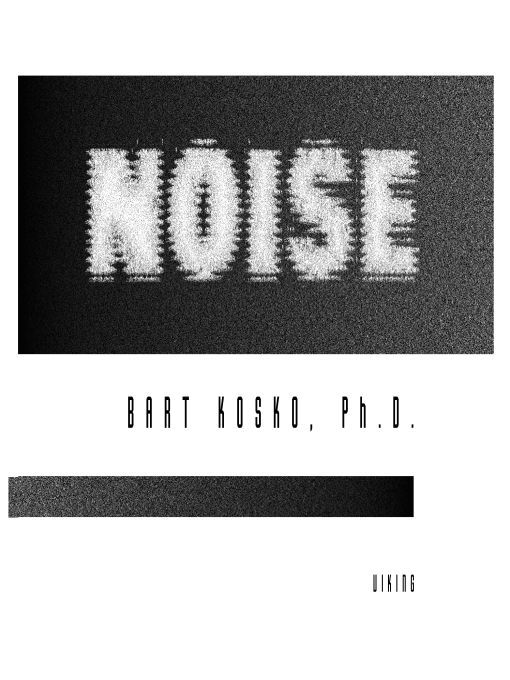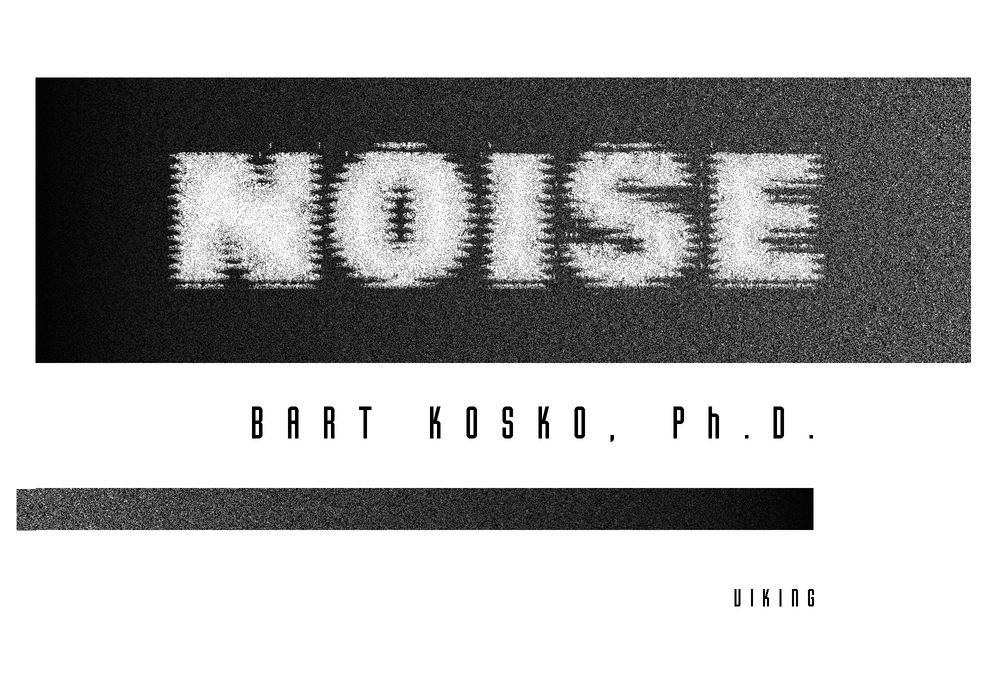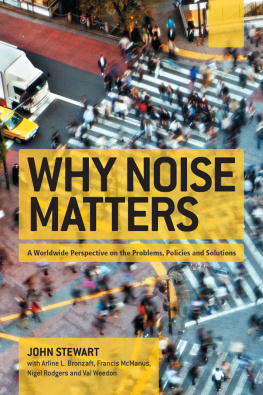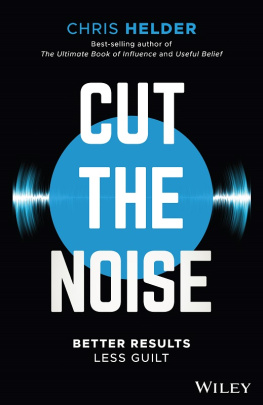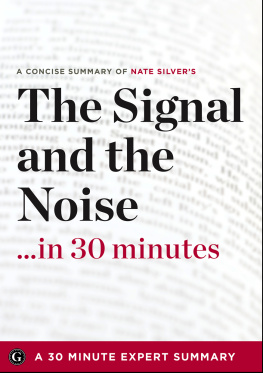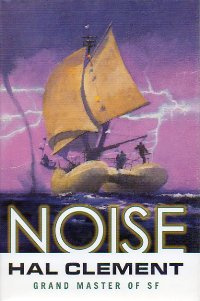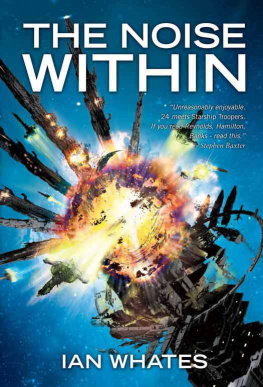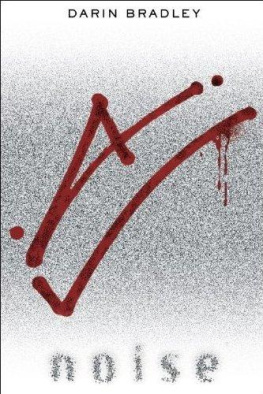Table of Contents
ALSO BY BART KOSKO
Heaven in a Chip
Nanotime
Fuzzy Thinking
TEXTBOOKS
Neural Networks and Fuzzy Systems
Fuzzy Engineering
For Dorothy Kosko (1922-2000)
Good neighbors keep their noise to themselves.
motto of the Noise Pollution Clearinghouse
ACKNOWLEDGMENTS
The author thanks editor Rick Kot for his exceptional editorial judgment and his equally exceptional patience.
PREFACE
I hate noise. I hate the roar of car traffic and leaf blowers and airplane overflights. I hate the screech of car alarms and police sirens and the public speeches that too many of my fellow citizens make into their private cell phones. I dislike any unwanted signal that impinges on my humble sense organs. This is especially so when that signal interferes with other signals of interestsuch as music or a friends voice or when it simply intrudes on the sound of silence. The same holds for the cyber-equivalent noise that arrives as spam in an e-mail mailbox or that flashes on the side of the computer screen as the latest product advertisement. They are all noise because they are all unwanted signals.
I am not alone in this dislike of noise. Polls and anecdotal data show that city dwellers tend to hate noise as much as they hate congestion or crime or any other city blight. New York City is a case in point because it is one of the noisiest cities in the world. New York mayor Michael Bloomberg began a legal war on noise pollution in 2004 with his overhaul of the citys outdated noise code. Such legal challenges to noise pollution will only continue as the problem grows. Even those of us who favor limited government have to grapple with this growing market failure as we impose ever more unwanted noise pollution on one another. Some form of local or state or even federal government regulation may be the only economically efficient solution in many cases because of the high transactions costs involved in getting others to tone it down. Anti-noise-pollution activism may become a new political force in the ever noisier digital agemuch as anti-environmental-pollution activism did in the earlier industrial age.
There is good reason to hate noise in the city or in the bedroom or anywhere else. Noise causes hearing loss in millions of people. It causes stress and sleep loss. Those maladies in turn promote more bad health effects and an overall decreased sense of well-being. Recent studies have shown that noise even increases the risk of heart attack and high blood pressure. Noise pollution also disturbs the low-decibel environment in ways that we are just beginning to understand. Underwater sonar noise appears to make humpback whales sing longer to communicate with one another. A Dutch study found that city noise makes the small bird known as the great tit sing at ever higher frequencies to communicate. Sustained noise energy may well produce other effects on the sensory and brain tissue of these and thousands of other species.
The future promises ever more noise. The modern world tends to become an ever louder and higher-decibel place that differs in kind from the low-decibel environments in which our hominid ancestors evolved over millions of years. More cars and gadgets and machinery produce this growing rumble of noise. Hospital noise is a case in point. The World Health Organization recommends an average noise level of about 35 decibels in patient areas. But a recent Johns Hopkins study found that the average noise level in hospitals rose from 57 decibels in 1965 to 72 decibels in 2005 with an even greater percentage increase in hospital evening noise. Noise pollution will only grow as the global economy expands.
I have another reason to dislike noise: I wage war on noise every day as part of my work as a scientist and engineer. We try to maximize signal-to-noise ratios. We try to filter noise out of measurements of sounds or images or anything else that conveys information from the world around us. We code the transmission of digital messages with extra 0s and 1s to defeat line noise and burst noise and any other form of interference. We design sophisticated algorithms to track noise and then cancel it in headphones or in a sonogram. Some of us even teach classes on how to defeat this nemesis of the digital age. Such action further conditions our anti-noise reflexes.
So it came as a surprise to find that sometimes noise is not an enemy. There had been a few engineering reports of the benefits of noise or dithering as early as the 1960s. I came upon the phenomenon myself in the 1980s while working with neural networks called associative memories. These networks consisted of simple on-off neurons that could learn and store patterns. The networks could later recall those patterns if a user showed the network only a small or noisy portion of themjust as we can recognize a tune after we hear only a small portion of it. Adding noise would sometimes smooth out the learning process or help stabilize a feedback network much as random raindrops can help calm a rough sea. Other scientists and engineers found and published more noise-is-good results and soon a new field of sorts called stochastic resonance started to emerge in the 1990s.
The sociology of the growing noise movement resembled the rise of chaos theory in the early 1980s and the rise of fuzzy logic in the late 1980s. Papers on noise benefits appeared in disparate journals and conferences because there was no journal or technical society dedicated to noise benefits. That remains true today with some small but important exceptions. Noise appeared to be a type of garbage-bin technical property much as chaos and fuzz first appeared to earlier audiences of scientists and engineers. Today fuzzy logic enhances the performance of thousands of consumer products and industrial systems by storing and reasoning with commonsense rules in computer chips or software. And chaos theory describes behavior that ranges from minuscule quantum fluctuations to heart arrhythmias and to the secure transmission of information in fiber-optical networks. Scientists have likewise now found hundreds of noise benefits because they have started looking for themeven though the noise benefits have been there all along.
This book looks at noise both as something bad and as something good. That fuzzy view of noise involves forays into fields such as law and economics and neural physiology as well as into the more formal noise haunts in science and engineering. The result is only an introduction to this vast and expanding subject and by no means a comprehensive treatment of it. The endnotes point the way to some of the pertinent technical literature on noise. Space demands require that they too are far from comprehensive.
The common goal in this noise inquiry is to see more noise patterns as signals whether or not we like those signals. This change in perspective involves a step up in understandingas when we first see that many of our own favorite signals strike others as noise. Insight grows along with an implied signal-to-noise ratio when more noise counts as signal. The shift from noise to signal starts at birth and continues throughout life. Thousands of sensory signals impinge on a newborn child but the child sees and hears and feels and tastes many of these as noise. An adult perceives most of the same signals as legitimate signals unto themselves. A physician or other expert sees even more signal structure in the same swath of experience. And so it goes up the ladder of insightto God all is signal.

